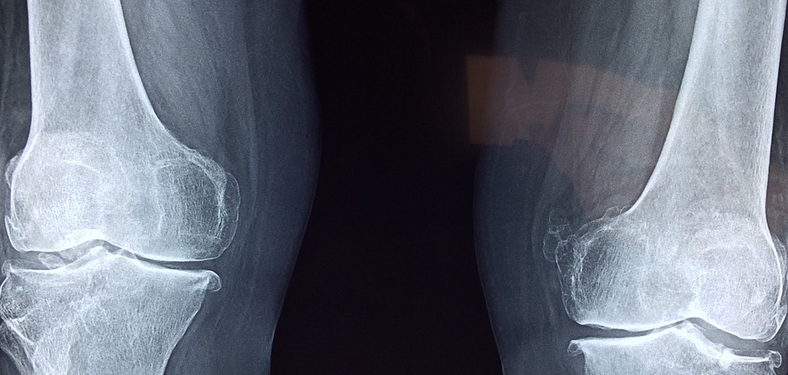All joints are at crucial points of the body, where two bones meet and move. Joints are the parts of our body that provide overall stability for our musculoskeletal system and facilitate movement. Joints also contain important things like cartilage. The patches of cartilage within joints support bones and the skeletal system by giving a sort of cushioning to them, and it prevents bones from painfully grinding against each other. Additionally, joints endure a significant portion of our body’s weight. They get strained on a regular basis just from people going through everyday motions. They are the most prone to impact injuries and to joint specific diseases. Below is a list of joints that seem to go downhill first. Different doctors have different ideas and theories about why certain joints suffer declination, but the list compiled may be something many readers can relate to.
Knees
The knee joints are situated between the fibula and the tibia, which are the longest bones in the body. The knee joint bends in a single plane of motion-backward, not side to side or forward, and it makes the joint similar to a standard door-hinge. The knee is always in danger of being strained or injured because its range of motion is so limited, and the additional risks are caused by the knees bearing the body’s weight constantly, and the twisting motions rendered by the two bar-like bones.
Spinal Joints
The primary cause for degenerative joint disease is age and general wear and tear obtained from the body’s aging process. Unfortunately, there are certain factors that can exacerbate or incite problems with spinal joints or speed up deterioration like obesity, poor nutrition, lifting too much and too often, lifting heavy weight incorrectly, smoking, genetic issues, and many other factors. Also, gender is a distinct factor in spinal joint diseases because women are far more likely to develop osteoarthritis.
Hips
Your hips are durable and healthy when you are younger, and they do not take as much of the brunt of age as the knees do, but the same things that cause problems with knees will eventually cause problems with the hips. Additionally, hips are also more prone to certain joint diseases like osteoporosis and osteoarthritis, which are both common in older, aging adults.
Also, it should be noted that hips seem to be more prone to impact injuries, and it is probably because they are our center of gravity. Professional athletes are afflicted overwhelmingly with hip problems, followed by knees, and pedestrian car accidents usually leave the victims with injured hip joints or spines.
Without personal care and a physician monitoring patients’ conditions as they age, joints will inevitably get worse over time. They will become painful and disease may set in. The deterioration, pain, and disease related to joints will start to impact all of the bodies key joints like the hips, the spinal joints and knees. By receiving a precise diagnosis and proactively treating your joint diseases, you can often alleviate or eliminate debilitating symptoms and stop secondary conditions from developing.




